Abstract
1. Unitary recording in the thoracic dorsal roots of mechanoreceptor discharges from the costo-vertebral joints was carried out in the cat and rabbit. Criteria for the identification of costo-vertebral joint mechanoreceptors were established.
2. The majority of rib joint mechanoreceptors are slowly adapting and fifty-three such receptors were studied. Five rapidly adapting receptors were also identified.
3. The responses of these receptors have been correlated with rib position and movement. The slowly adapting receptors gave a monotonic response to different rib positions. 72% showed an increase of discharge rate with displacements towards expiratory rib positions.
4. In response to manually imposed rib movements slowly adapting joint mechanoreceptors gave a dynamic response which was directly related to the velocity of the movement and adapted within 2 sec. The movements of breathing produced a corresponding alteration of the discharge frequency of the slowly adapting receptors.
5. Slowly adapting receptors were localized to the capsule of the costo-transverse joint by probing. They responded to increased intra-articular pressure with an increase of discharge rate and were silenced by intra-articular lignocaine, 0·4%.
6. Rapidly adapting joint mechanoreceptors responded to rib movement with a brief burst of discharges.
7. The rib joint mechanoreceptors signal rib joint position, and the direction and velocity of rib movement. It is suggested that these afferent discharges provide the basis for the perception of respiratory movements of the chest. The significance of these receptors to the `sense of effort' resulting from a resistance to breathing is discussed.
Full text
PDF
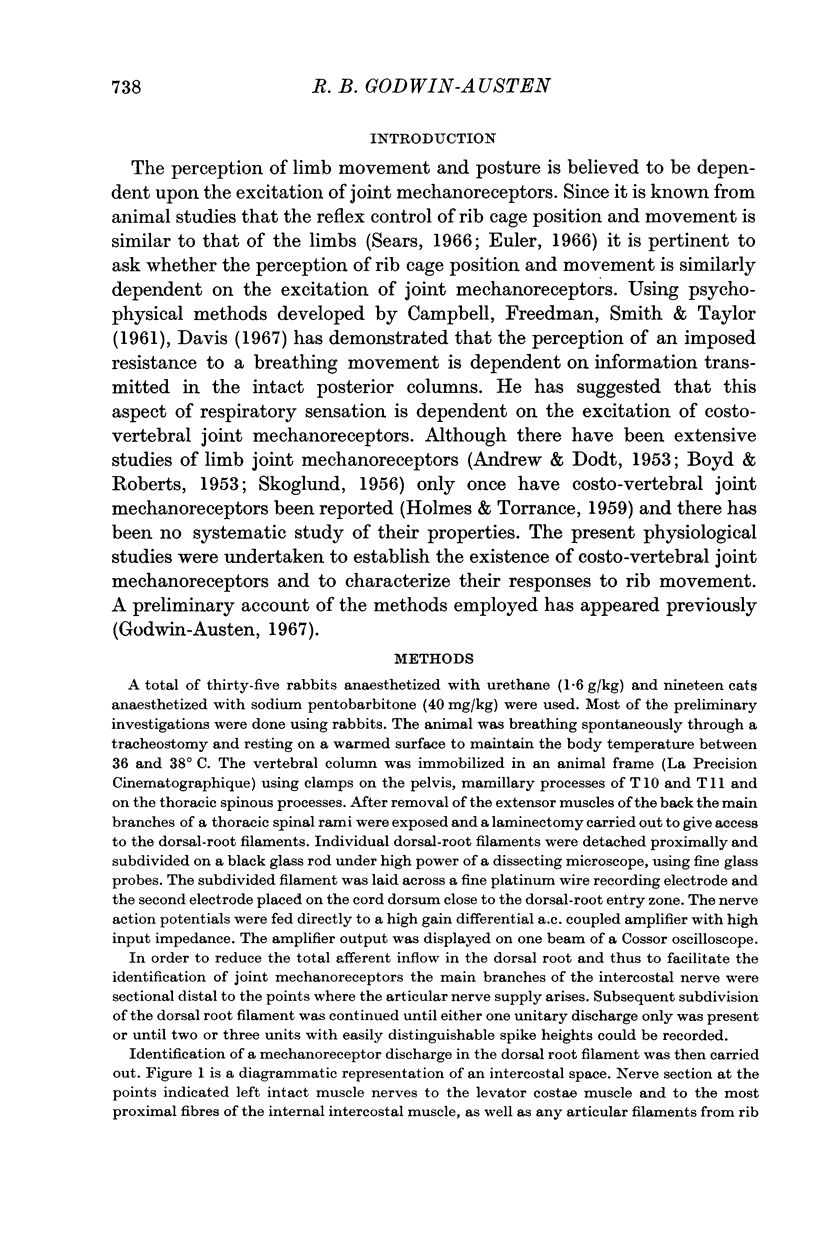
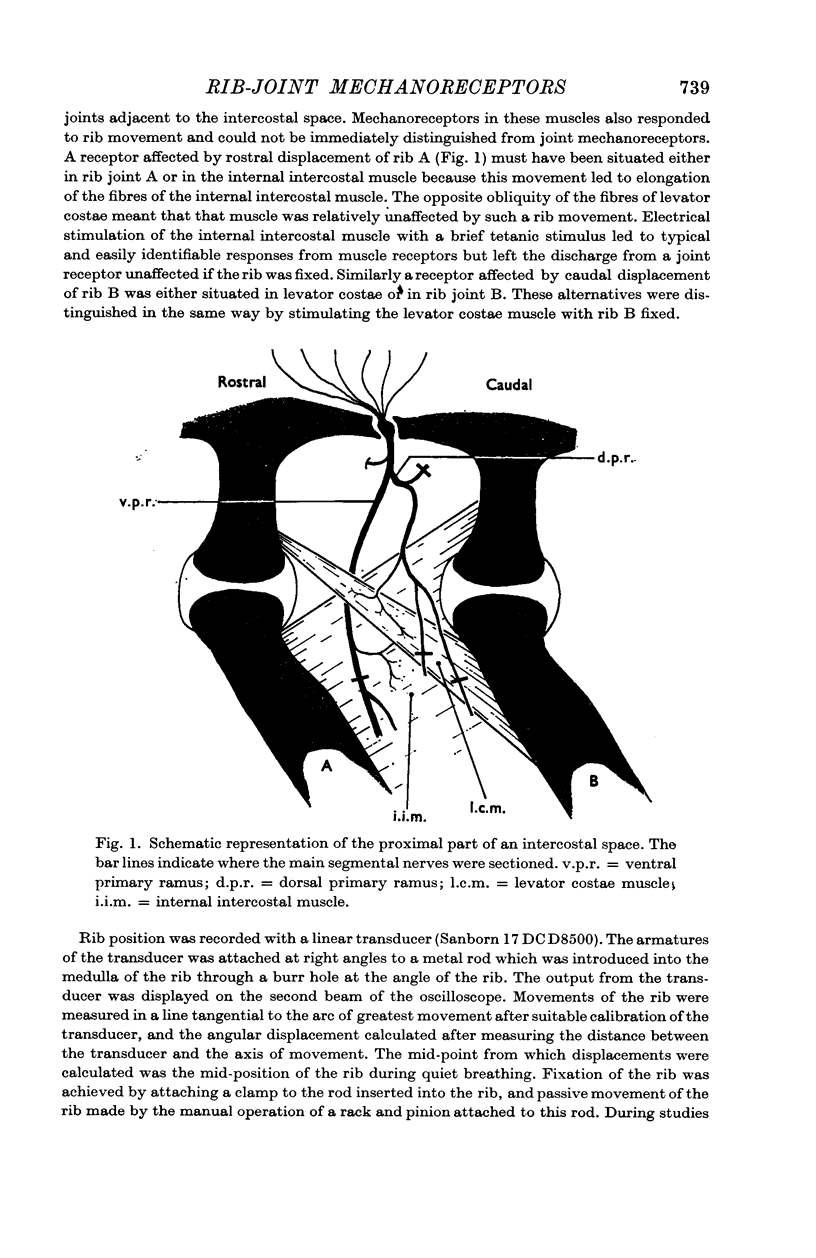
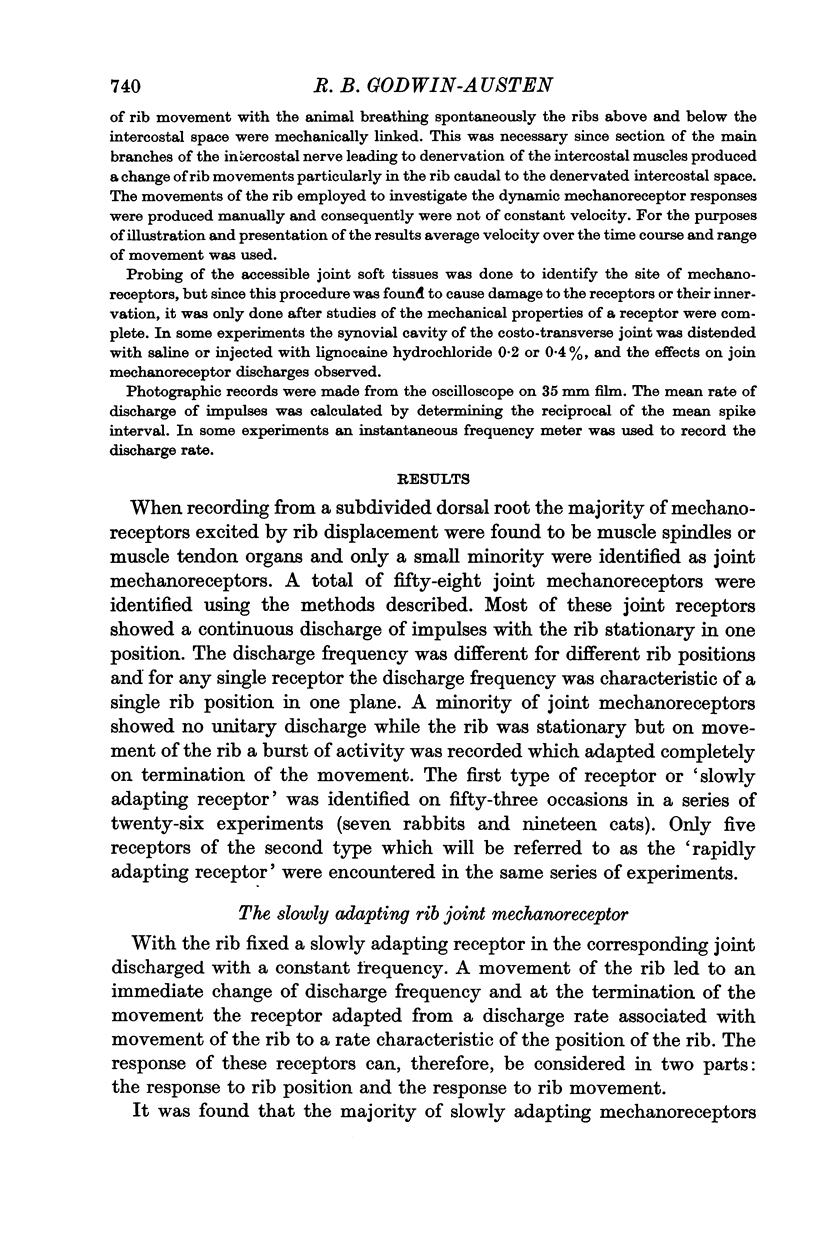
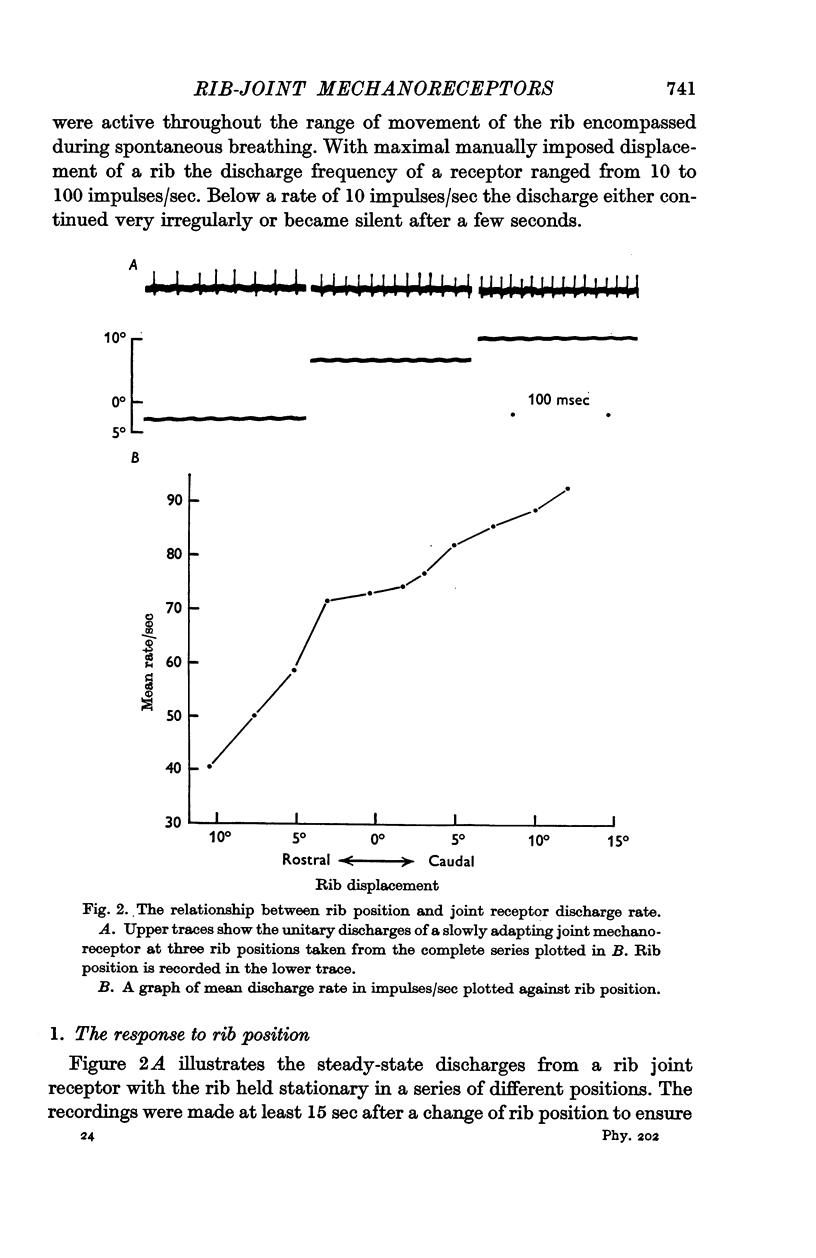

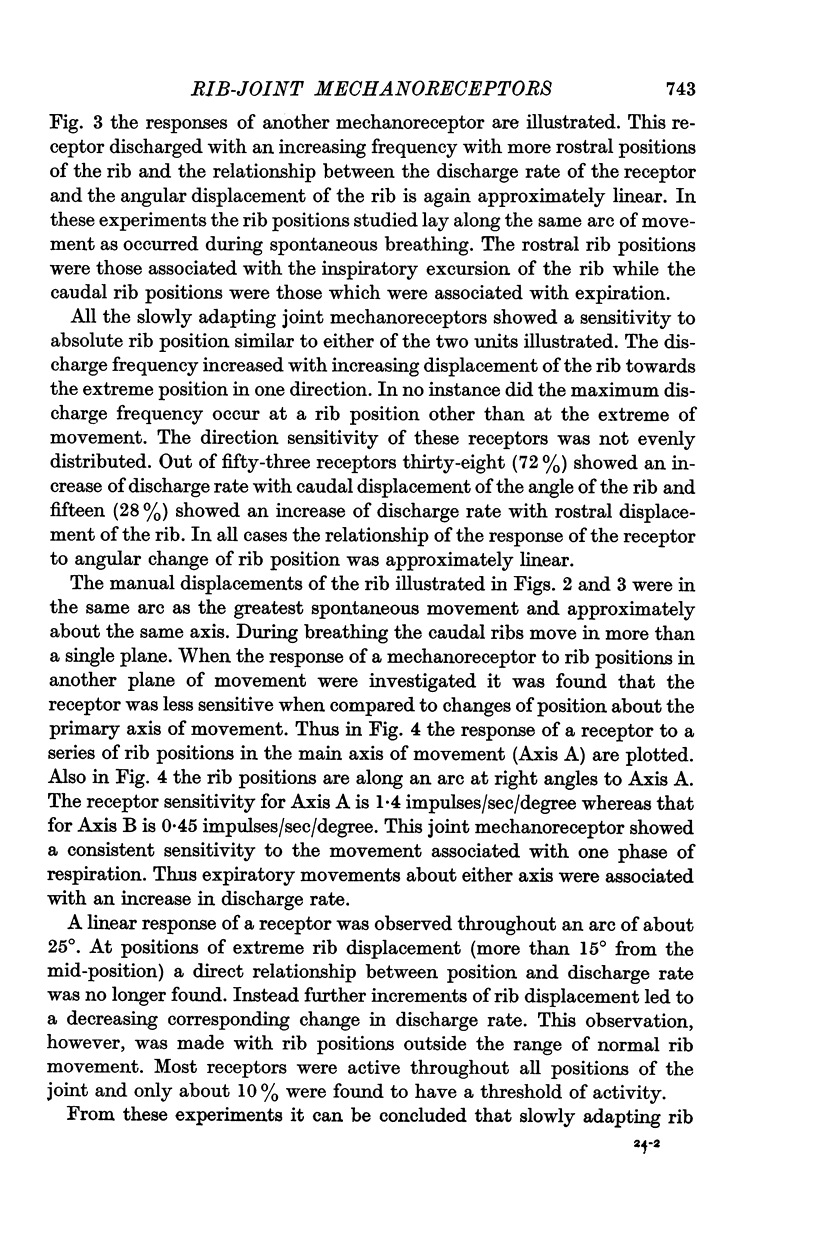


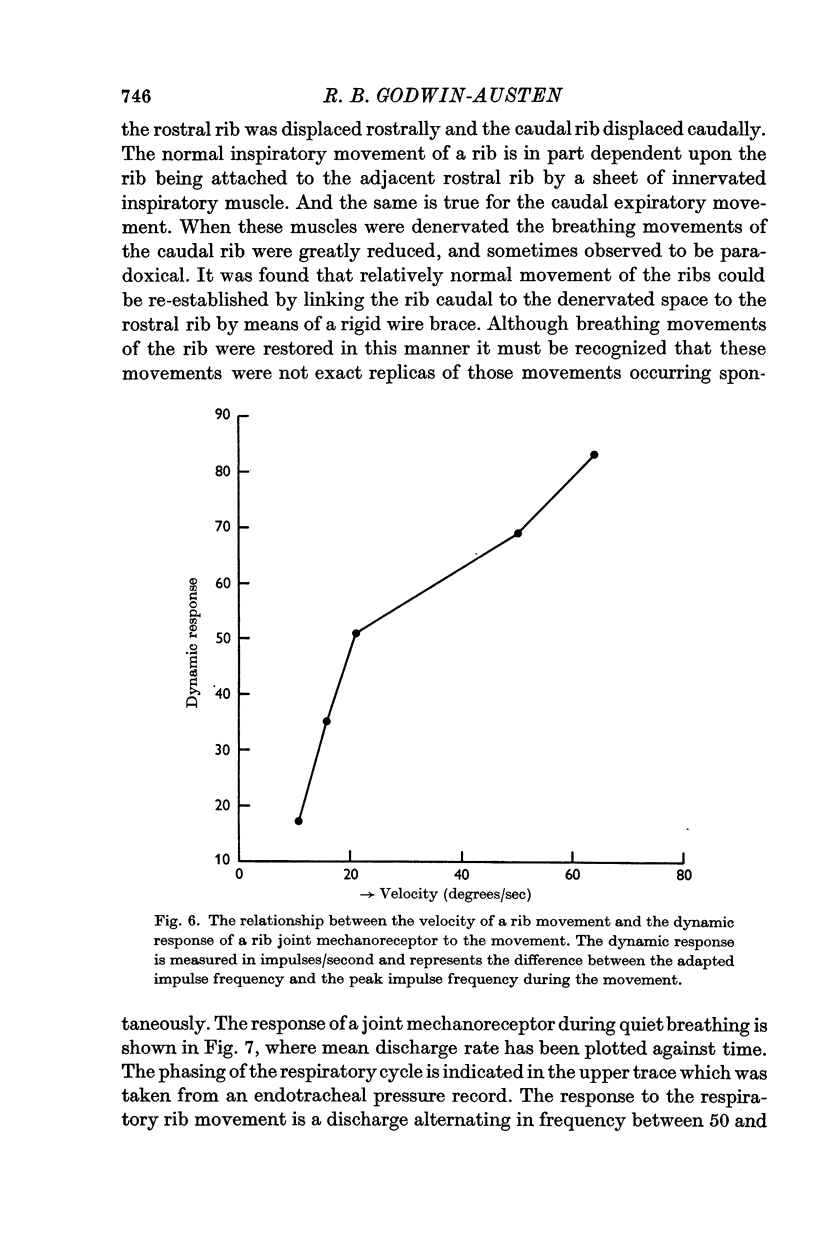

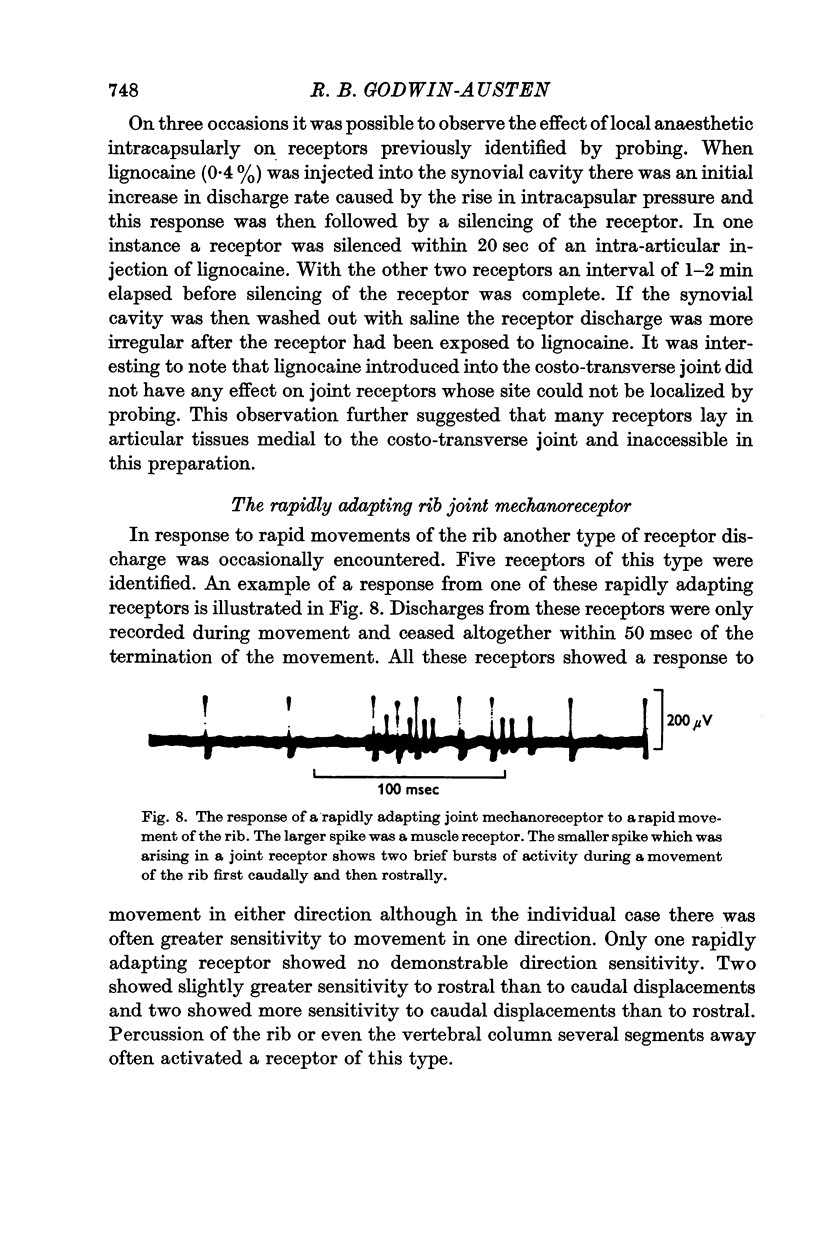
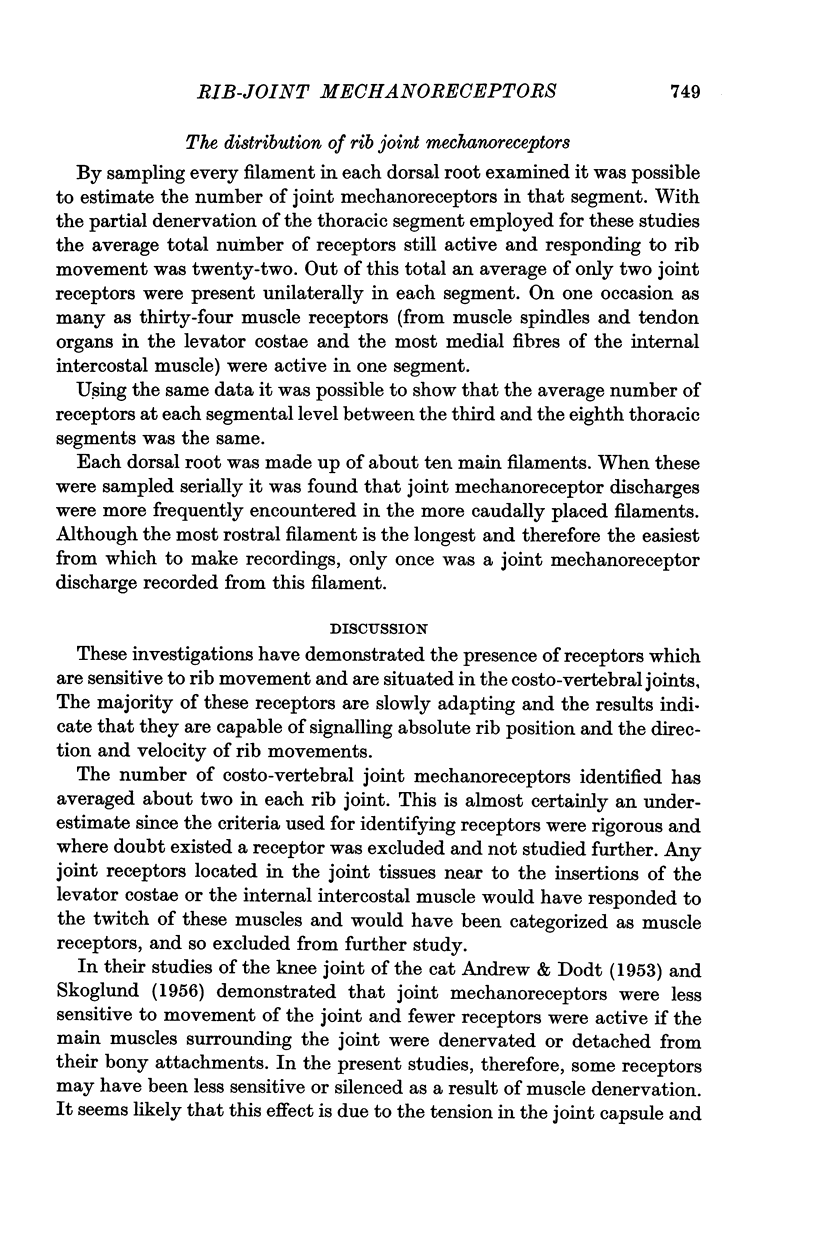
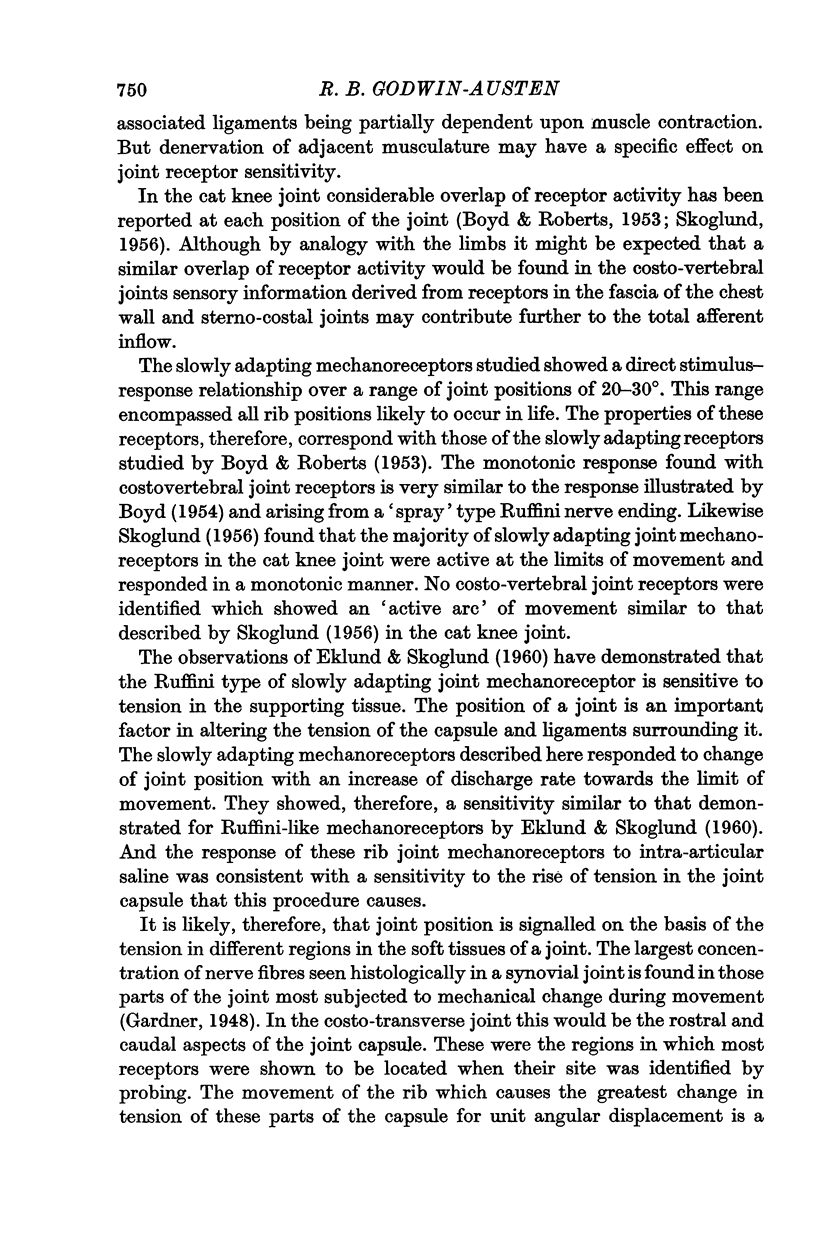

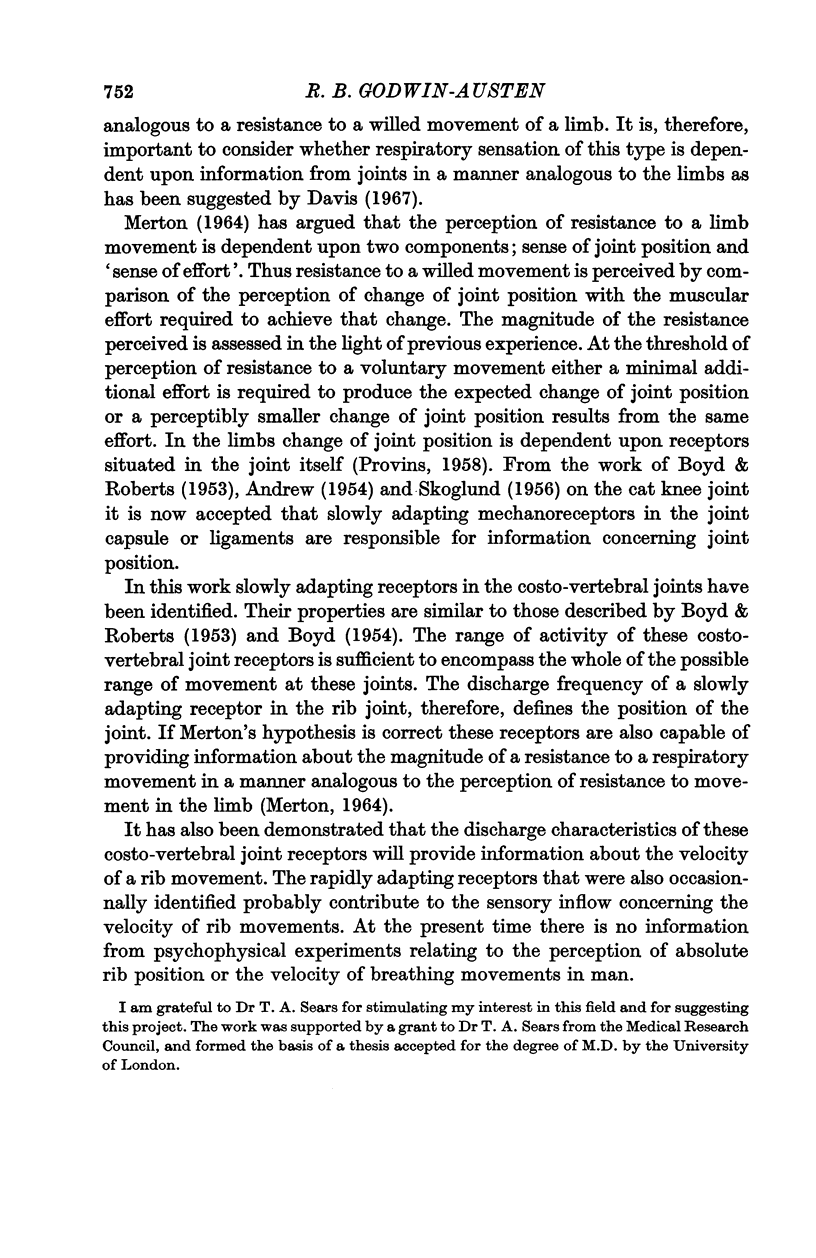
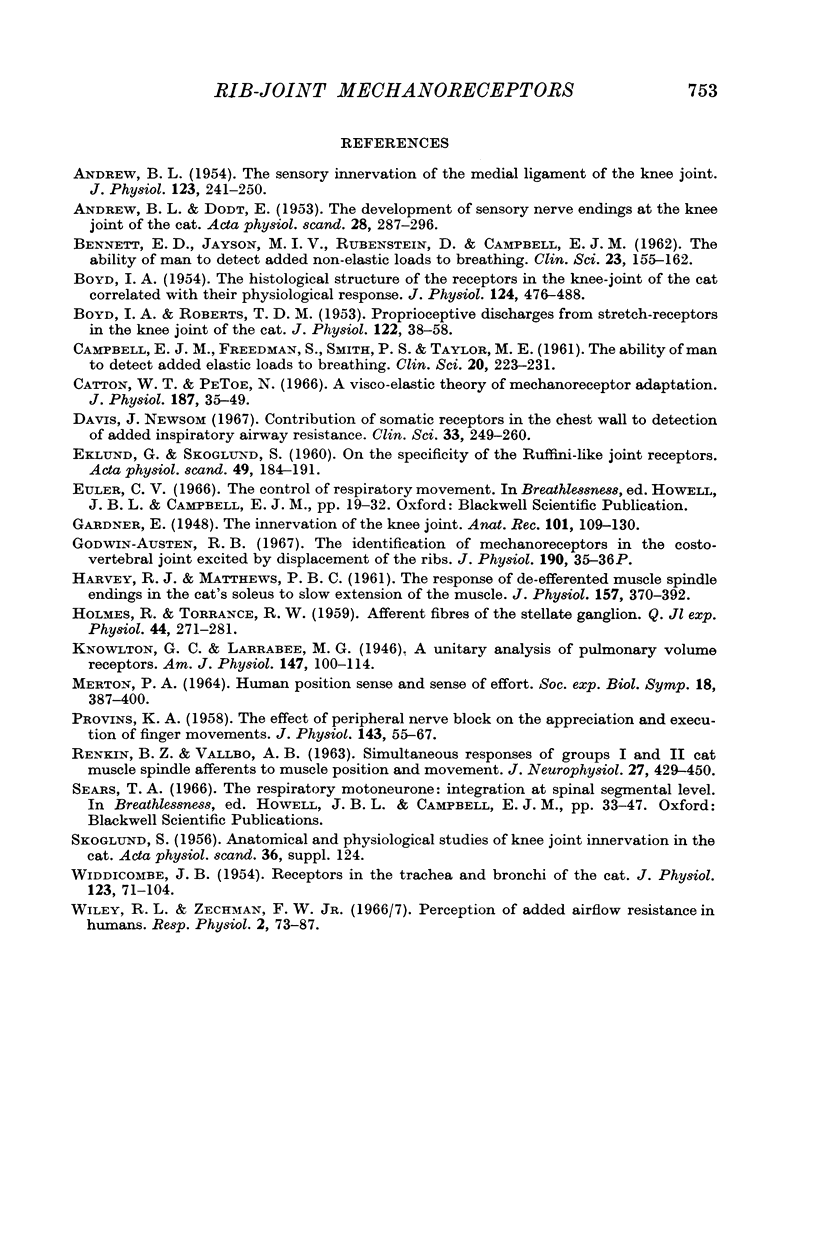
Selected References
These references are in PubMed. This may not be the complete list of references from this article.
- ANDREW B. L. The sensory innervation of the medial ligament of the knee joint. J Physiol. 1954 Feb 26;123(2):241–250. doi: 10.1113/jphysiol.1954.sp005047. [DOI] [PMC free article] [PubMed] [Google Scholar]
- BENNETT E. D., JAYSON M. I., RUBENSTEIND, CAMPBELL E. J. The ability of man to detect added non-elastic loads to breathing. Clin Sci. 1962 Aug;23:155–162. [PubMed] [Google Scholar]
- BOYD I. A., ROBERTS T. D. Proprioceptive discharges from stretch-receptors in the knee-joint of the cat. J Physiol. 1953 Oct;122(1):38–58. doi: 10.1113/jphysiol.1953.sp004977. [DOI] [PMC free article] [PubMed] [Google Scholar]
- BOYD I. A. The histological structure of the receptors in the knee-joint of the cat correlated with their physiological response. J Physiol. 1954 Jun 28;124(3):476–488. doi: 10.1113/jphysiol.1954.sp005122. [DOI] [PMC free article] [PubMed] [Google Scholar]
- CAMPBELL E. J., FREEDMAN S., SMITH P. S., TAYLOR M. E. The ability of man to detect added elastic loads to breathing. Clin Sci. 1961 Apr;20:223–231. [PubMed] [Google Scholar]
- Catton W. T., Petoe N. A visco-elastic theory of mechanoreceptor adaptation. J Physiol. 1966 Nov;187(1):35–49. doi: 10.1113/jphysiol.1966.sp008074. [DOI] [PMC free article] [PubMed] [Google Scholar]
- Davis J. N. Contribution of somatic receptors in the chest wall to detection of added inspiratory airway resistance. Clin Sci. 1967 Oct;33(2):249–260. [PubMed] [Google Scholar]
- EKLUND G., SKOGLUND S. On the specificity of the Ruffini like joint receptors. Acta Physiol Scand. 1960 Jul 15;49:184–191. doi: 10.1111/j.1748-1716.1960.tb01942.x. [DOI] [PubMed] [Google Scholar]
- Godwin-Austen R. B. The identification of mechanoreceptors in the costo-vertebral joint excited by displacement of the ribs. J Physiol. 1967 May;190(2):35P–36P. [PubMed] [Google Scholar]
- HARVEY R. J., MATTHEWS P. B. The response of de-efferented muscle spindle endings in the cat's soleus to slow extension of the muscle. J Physiol. 1961 Jul;157:370–392. doi: 10.1113/jphysiol.1961.sp006729. [DOI] [PMC free article] [PubMed] [Google Scholar]
- HOLMES R., TORRANCE R. W. Afferent fibres of the stellate ganglion. Q J Exp Physiol Cogn Med Sci. 1959 Jul;44:271–281. doi: 10.1113/expphysiol.1959.sp001400. [DOI] [PubMed] [Google Scholar]
- Merton P. A. Human position sense and sense of effort. Symp Soc Exp Biol. 1964;18:387–400. [PubMed] [Google Scholar]
- PROVINS K. A. The effect of peripheral nerve block on the appreciation and execution of finger movements. J Physiol. 1958 Aug 29;143(1):55–67. doi: 10.1113/jphysiol.1958.sp006043. [DOI] [PMC free article] [PubMed] [Google Scholar]
- RENKIN B. Z., VALLBO A. B. SIMULTANEOUS RESPONSES OF GROUPS I AND II CAT MUSCLE SPINDLE AFFERENTS TO MUSCLE POSITION AND MOVEMENT. J Neurophysiol. 1964 May;27:428–450. doi: 10.1152/jn.1964.27.3.429. [DOI] [PubMed] [Google Scholar]
- WIDDICOMBE J. G. Receptors in the trachea and bronchi of the cat. J Physiol. 1954 Jan;123(1):71–104. doi: 10.1113/jphysiol.1954.sp005034. [DOI] [PMC free article] [PubMed] [Google Scholar]
- Wiley R. L., Zechman F. W., Jr Perception of added airflow resistance in humans. Respir Physiol. 1966 Dec;2(1):73–87. doi: 10.1016/0034-5687(66)90039-9. [DOI] [PubMed] [Google Scholar]


